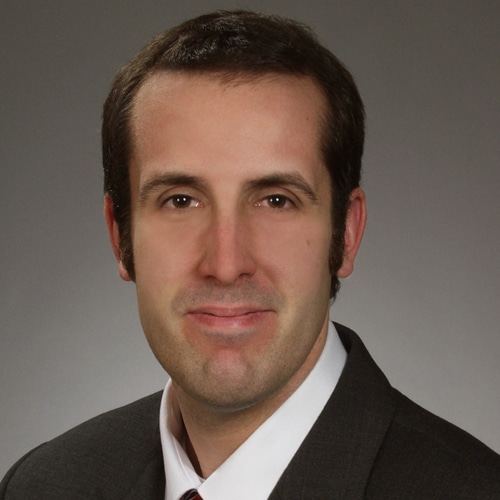Law practice management software provider Clio released its first annual Legal Trends Report on October 17. The survey is a compilation of data aggregated from 40,000 Clio subscribers in the continental U.S. The data, representing usage events in Clio, is anonymized; the analogy the report draws is that of a turnstile at a sporting event, turning over numbers, without collecting identifying data.
The report reads like Freddy Krueger slashing through the (hopes and) dreams of solo lawyers.
It is almost entirely concerned with law firm billing; and, the majority of data relied upon is presumably the time and billing information garnered from users. The report itself is split into two parts: “The Billable Hour Index” (compiling data from 2010 through the first nine months of 2016) and “Death by a Thousand Cuts: The Lawyer’s Funnel” (compiling data from 2015). That’s a peppy title, is it not! Perhaps “Satan’s Playground: Law Practice in America” was already the title of a popular children’s book?
My goal today is not to recap the entire survey, but rather to cherry-pick interesting aspects of it, as well as to consider further effects not expressly addressed within the survey.
The Good
“The Billable Hour Index” relays “real” and “absolute” (taking into account cost of living) average hourly billing rates for each of the continental United States. The report also lists average hourly billing rates for certain practice areas. This information is very valuable for lawyers in at least two specific instances:
- It is extremely difficult for attorneys to set billing rates based on competitors’ prices, because lawyers in the same practice area do not share that information, and bar associations stay away from sponsoring discussion on fee setting for fear of sparking concerns over price fixing. When lawyers set or reset rates, they’re mostly guessing about what everybody else is doing. Clio’s Legal Trends Report offers a state-by-state baseline.
- Forum shopping lawyers (new grads looking for jurisdictions where they can make the most money, law firms seeking to open satellite offices) now have a better notion of where they can bill the most, and in which practice areas.
According to the report, if you want to charge the highest “real” rates possible, you’re going to want to practice bankruptcy law in Nevada — just don’t blow it all at the casinos. If you want to go against the grain and try to make the least money possible, you’ll want to become a solo criminal lawyer in Iowa. (Note: I am a frequent visitor to, and love Iowa. But, if I lived there, I would be a farmer, not a lawyer.)
However, the answer may not be so plain. While the report does address business seasonality, it does not address intake trends over years, which would affect bankruptcy claims, for example, since those tend to ebb and flow along with the economy.
Perhaps the most encouraging segment of the report is that credit card payments are made 35 percent faster (within 20 days, on average) than check payments (within 31 days, on average). That expediency should offset attorney gripes about processing fees, as modern software obviates traditional ethics concerns about credit card processing.
The Bad
Over the past five-plus years, billing rates have risen 10.5 percent; but, that’s not even enough to keep up with inflation, as the consumer price index has risen 10.6 percent over that same time period.
The report indicates that most Clio users still bill hourly, whereas value billing can be essentially uncapped (in terms of time restraints), as the report explores in detail.
In terms of utilization rate, solo practice is the least desirable firm structure. Efficiencies begin to increase in Clio firms of two to four lawyers, before plateauing, and then taking off again at the 10th lawyer+. While solo lawyers’ utilization rate is 22 percent, law firms with 12 lawyers reach 50 percent.
The Ugly
“The average small-to-midsize firm only collects 1.5 hours of paid work time for each workday.” You read that right — that’s the mic drop. Put another way, the Legal Trends Report indicates that, for the average solo or small firm lawyer to get paid for eight hours, she has to put in more than a full workweek. If that same lawyer works 48 weeks of the year (minus vacation), she gets paid for eight hours of work for the equivalent of 45 days.
I could go on; but, now I’m just sad.
While realization rates and collection rates hover above 80 percent for Clio subscribers, utilization rates are as low as 28 percent (for solos). The culprit in this story, then, the veritable Colonel Mustard in the study with the lead pipe, is the lawyer himself (gasp). Attorneys don’t spend even the majority of their time performing substantive work. That, of course, begs the question: Why not? My suspicion is that this is partly under lawyers’ control, and partly not.
In the first instance, running a solo law practice necessitates that the attorney not spend the majority of his time billing, especially at the outset. Many solos do not farm out administrative activities that larger firms can better afford to farm out. Solos also spend an inordinate amount of time marketing their law firms, especially early on, when building a client base. And, even successful solo lawyers, as the sole engines for generating clients for their firms, are obsessive over acquiring new business, which drives them to continue to spend lots of hours marketing, even after those lawyers have established an economic foothold in the industry.
Given all of that, it’s easy to see why additional lawyers add to economies of scale — especially where rainmakers can begin to devolve work to associates. In firms of a certain size, lawyers are subject to law firm marketing; in the majority of instances, it’s not something they can control, or even reduce the effect of.
However, attorneys can increase their efficiency. Lawyers are generally inefficient workers, in small firms, in part because they’re obligated to manage so many aspects of running a business that it forces them to constantly multitask. That, in turn, makes it difficult for them to focus, and to address large or complicated substantive matters within effective time frames. New requirements for understanding technology, increasing emphasis on project management in legal and the infiltration of AI may serve to create more efficient small firm lawyers in the future. At this moment, however, we are only at the threshold of those movements.
The Rest of the Story, Part I: What Do Lawyers Make?
Although the report does not extend the analysis this far, the average collection rate and average billing rate can be used to calculate an average annual revenue figure for the solo and small firm lawyers whose data was surveyed. If that average lawyer collects 1.5 hours of billable work each day, and bills at an hourly rate of $232, that yields an annual revenue of $83,520, assuming four weeks’ vacation, sick time, and so forth.
That feels encouraging until you consider that it is a gross figure. That naked revenue number still needs to cover taxes (plus self-employment tax) and overhead (minus business tax deductions). Assuming a 35 percent haircut (which may be generous), that figure tumbles to a net of under $55,000. Given that lawyers’ personal expenses often include high monthly student loan payments, this represents a “getting by” figure, rather than a “getting over” one.
The solo lawyer in Iowa, identified as the least-compensated stakeholder in the legal profession by the report, grosses only $46,400, on average, which nets out to just over $30,000, assuming the same 35 percent figure for overhead and taxes.
Clearly, small firm lawyers aren’t often getting rich — just how “not rich” may be the biggest surprise the Clio Legal Trends Report yields.
There is, however, a silver lining. If lawyers are willing to adjust hours per week and can adjust efficiency measures, there is more money to be made.
For example, the average lawyer who works 60 hours instead of 40 hours per week (and that may be the average lawyer, anyway) makes $125,280 in annual revenue, instead of $83,520. (If a lawyer working 40 hours per week collects 1.5 hours per day, a lawyer working 60 hours weekly would collect 2.25 hours per day, yielding the higher revenue figure.) Maybe that’s a tarnished silver lining because it means you have more work to do. But, there is another way to rejigger the figures, and that is to become more efficient. Bumping the utilization rate ultimately increases the collection rate. If a lawyer could double her utilization rate, and bill 4.4 hours per day, the collection rate would increase to 3 hours per day, which would yield an annual revenue figure of $167,040 for a 40-hour workweek — over $40,000 more than the attorney who works a 60-hour week and does not increase her utilization rate.
If there ever was an argument for working smarter, not harder … this is it.
The Rest of the Story, Part II: Sestermetrics
I’ve been advocating for solo and small firms to begin to rely on data analysis for a while now, including in this space. In taking that analysis a step further, I’ve assigned this subheading the title “Sestermetrics” Baseball has sabermetrics; and, that started a massive movement, across all of sports. Perhaps data analytics in legal just needs a name, to take off. (The sesterce was the monetary unit by which lawyers were first officially paid, during the Roman empire.) I’m having t-shirts printed and everything, so it’s on.
I’ve extended my argument in the form of a law review article, in which I suggested that large vendors like Clio should begin to aggregate and anonymize user data for the benefit of solo and small law firms (at p.151, et seq.). So, kudos to Clio for taking this first step.
Of course, there is that one thing about first steps: it’s just one movement, the beginning movement, in a much longer journey. Clio’s initial foray has been to provide useful information for solo and small firms about billing and efficiency in the form of an annual report. Upcoming challenges for Clio and similarly-situated companies include:
- Baking continually updating data analytics features into products
- Drilling down to county and city data sets and releasing same
- Expanding data considerations beyond time and billing
How fantastic would it be for a Clio user to input information about a specific case, and have the software spit back an expected judgment and/or win percentage?
Solo and small law firms can better compete with larger firms when they, too, are making data-centric decisions, rather than the ad hoc choices they have continually suffered from, for lack of information.
This is the Information Age, after all — and, lawyers (consistent laggards against innovation) are finally beginning to step forward.
Illustration ©iStockPhoto.com





















